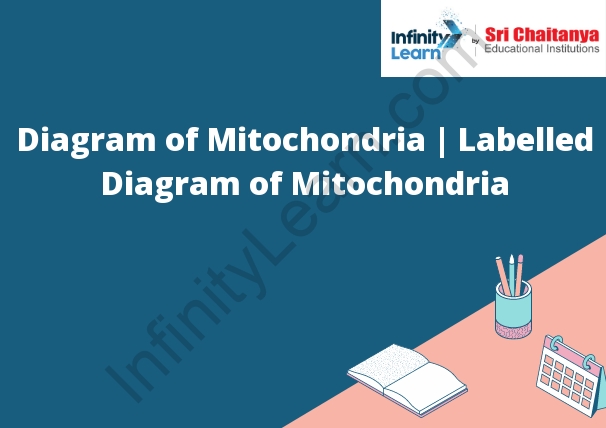Table of Contents
What are Mitochondria?
Diagram of Mitochondria: Mitochondria are organelles found in the cytoplasm of eukaryotic cells. They are responsible for the production of adenosine triphosphate (ATP), the main energy currency of the cell. Mitochondria have a double-membrane structure and also are unique in that they have their own DNA. This DNA is inherited from the mother and is responsible for the expression of mitochondrial genes.

The Structure of Mitochondria
Mitochondria organelles found in the cytoplasm of cells. They are responsible for the generation of energy in the form of adenosine triphosphate (ATP). Mitochondria have a double-membrane structure and also contain their own DNA. Therefore the inner membrane of the mitochondria is folded into structures called cristae, which increase the surface area available for the production of ATP.
Labelled Diagram of a Mitochondrion
The diagram of a mitochondrion shows the internal structure of the organelle. The outer membrane shown as a thin, transparent layer and the inner membrane shown as a thicker, more opaque layer. The matrix shown as a space inside the inner membrane and the cristae shown as folds in the inner membrane. The diagram also shows the location of the mitochondrion in a cell.
Characteristics of the Mitochondrial DNA/ Genome:
- The mitochondrial DNA (mtDNA) is a circular, double-stranded DNA molecule that found in the mitochondria of cells. The mitochondrial genome (mt genome) consists of the mtDNA plus the genes located in the mitochondria.
- The mtDNA passed down from mother to offspring and relatively conserved, meaning that it mutates at a relatively slow rate. However this makes the mtDNA a useful tool for studying human evolution and genetic relationships.
- The mt genome contains 37 genes, most of which involved in the production of energy. The mt genome also contains the mitochondrial control region, which is a region of the genome that is responsible for regulating gene expression.
The Function of Mitochondria
- Mitochondria organelles found in the cytoplasm of cells. They are unique in that they have their own DNA, which is separate from the DNA in the cell’s nucleus. Mitochondria are responsible for generating energy for the cell, and they also play a role in cell signaling.
- Mitochondria generate energy for the cell by converting food into a form that the cell can use. This process, called cellular respiration, requires oxygen and produces carbon dioxide. Mitochondria also play a role in apoptosis, or programmed cell death.
- Mitochondria also involved in cell signaling. They produce proteins called mitokines that can activate or suppress the activity of other cells. Mitokines can also affect the function of the cell’s nucleus.






